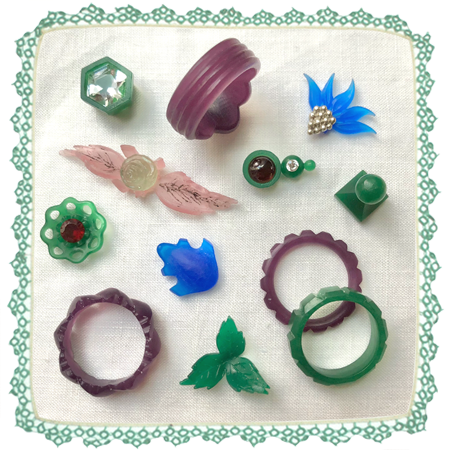
It's not because I'm a luddite that I prefer to work differently.
"Why don't you use CAD?" Has asked many a customer. It's a question I often consider myself, as I shake out my stiff wrists after hours of painstaking benchwork. I am not one of those jewelers that shies away from the marvels of modern technology for the sake of bragging about using ancient techniques, but admittedly do some things "the old way."
CAD, or computer aided design, has become a ubiquitous tool in my industry. The current method of production across the lion's share of commercial jewelry manufacturing is to design pieces using 3-D modeling software. However, I opt to hand sculpt my prototypes still; either by carving them from wax to be cast into metal, or fabricating them directly in the metal itself. For those of you interested in the technical aspects of jewelry making, I've compiled this summary in attempt to explain why:
First of all...
- It's not as much of a time saver as people often think. Just as I've spent years honing my deftness in specific areas of my craft, CAD rendering is a skill in its own right that involves immense loads of practice and specialized equipment. It makes perfect sense for large companies churning out thousands of units of a given design, but isn't always the most cost effective or efficient answer for an artisan like me. Consider, for example, my Sanctum collection. Each piece in that series is one-of-a-kind by the nature of the geode it incorporates. Why would I sit at a computer and create a cad file of one of those intricate little gates, when I can physically shape the creation from wires and sheets of metal in the same amount of time?

Pictured above: Mystical Ruins pendant in the making (left), and the finished product once I have soldered together all the components.
And then there's my craving for the tactile quality of handiwork.
- The actual making of my work lends itself to a more satisfactory result when it comes to executing the composition that I see in my head. Picture a potter throwing clay at their wheel. They respond to the material as it dances in their hands, refining the form which emerges from the process. Metalsmithing may be a less immediate metier, but involves a similar type of dialogue with the composition taking shape. There's a certain amount of gleaning what does and doesn't "look right" that I can only derive from manipulating the material with my fingers.
Finally,
- I think the most stunning jewelry benefits from the individual signature of the maker. Being a jeweler means practicing a trade, but it also means being an artist. It's a form of expression and connection, lofty as that may sound. Just as an oil painter uses a different brush than a watercolorist, each jeweler adopts distinct tools and methods to achieve their desired effects. It may change in the future, but right now CAD is just not one of my mediums of choice.
